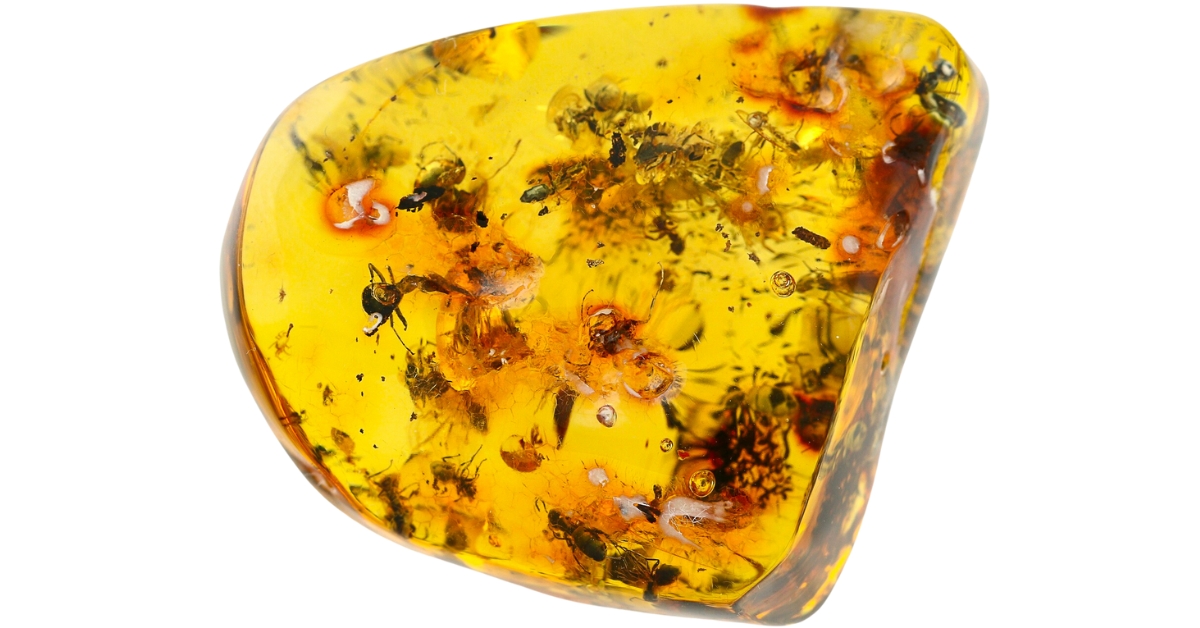Amber is like nature’s time capsule, preserving ancient secrets in its beautiful hues. It starts its life as sticky tree resin that transforms and fossilizes over millions of years. It can even be as old as 320 million years!
What amber looks like is truly mesmerizing, too. It comes in a rainbow of colors, from sunny yellows to deep, mysterious reds. The coolest part? It often traps tiny pieces of the past inside it, like ancient insects or plant fragments.
It can also be found in various places around the world, each location giving rise to different types of amber.
In this article, we’ll get to know the vast amber types and peek into a world long gone through them. Let’s dive in and discover the stories these ancient gems have to tell!
The 22 Different Types Of Amber And What They Look Like
The value of amber comes not only from its beauty and the variety of colors it can have but also from the incredible history it holds within. When we explore its different types, we’re looking at a window into our interesting past.
Baltic Amber
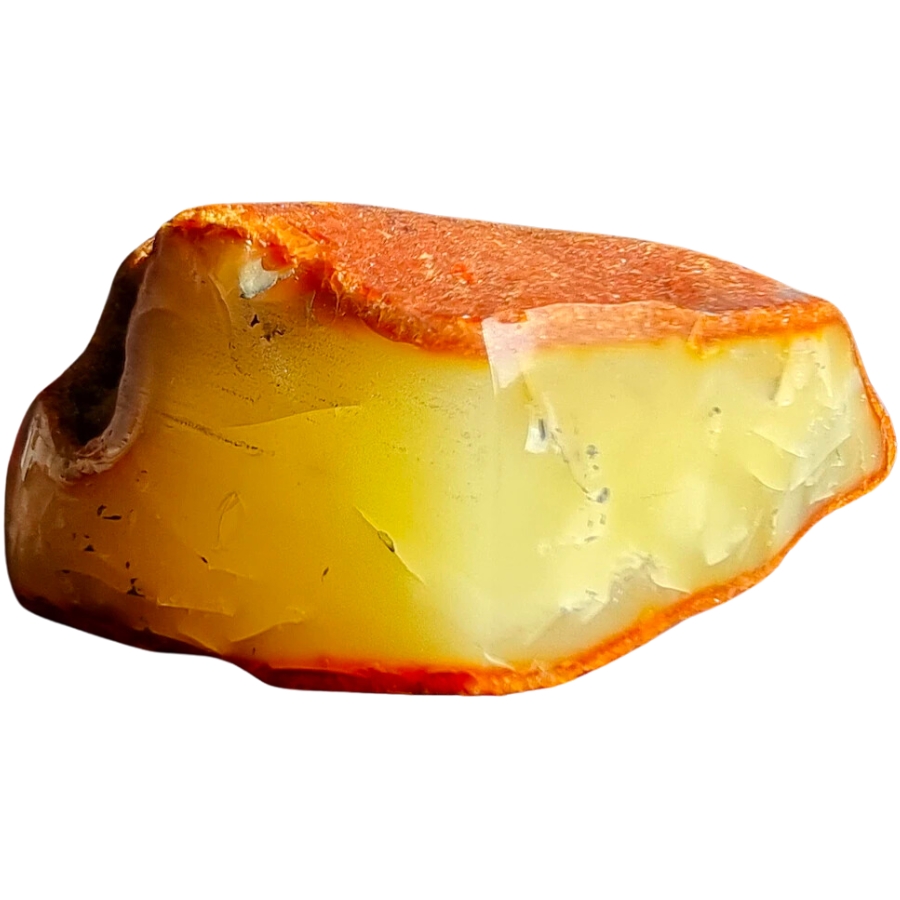
Baltic amber is special because of its wide range of colors, from pale yellow to deep, rich browns, and sometimes even has a reddish or greenish hue.
What makes this amber type stand out is its exceptional clarity. Many pieces are almost completely clear, which lets us see inside them.
This is exciting because it often contains tiny pieces of the past, like insects or plant materials, perfectly preserved.
Baltic amber’s warm, glowing colors and the way it feels to the touch, smooth and sometimes with a slightly tacky surface, add to its appeal. It’s also lightweight, which makes it comfortable to wear as jewelry.
It sometimes contains succinic acid, a substance used in various ways, including in medicines and cosmetics. This unique component adds another layer to Baltic amber’s value, showing it’s not only beautiful to look at but also has practical uses.
Where you can find Baltic amber
Baltic amber is primarily found around the Baltic Sea region. This includes countries like Russia, Poland, Lithuania, Latvia, and Estonia. These places are rich in amber because of the ancient forests that once stood there.
If you want to find similar-looking natural treasures in the USA, check out our guide to the best rockhounding locations.
DON'T MISS OUT ON ANY GREAT FINDS!
While you're out searching you're going to find A LOT of other interesting rocks and minerals along the way. The last thing you want to do is toss out something really interesting or valuable. It can be easy to misidentify things without a little guidance.
You absolutely need a good reference guide in order to understand what you're looking at!
We've put together a fantastic field guide that makes identifying 140 of the most interesting and valuable rocks and minerals you will find REALLY EASY. It's simple to use, really durable, and will allow you to identify just about any rock and mineral you come across. Make sure you bring it along on your hunt!
Now, back to the identification specifics:
Dominican Amber
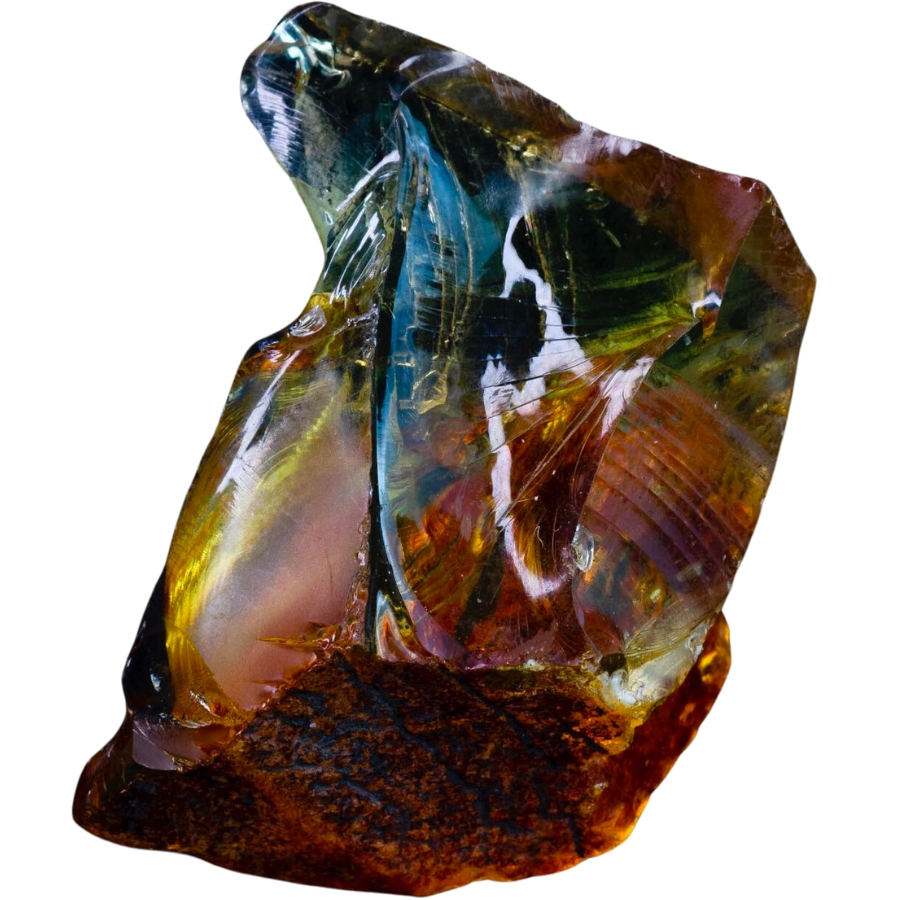
Dominican amber forms from the resin of prehistoric Hymenaea protera trees. It’s known for its remarkable clarity and the rich variety of colors it displays, ranging from a pale yellow to a deep, almost reddish hue.
Some pieces even have a rare blue or green tint, especially when viewed under sunlight.
Usually, Dominican amber has a high number of fossil inclusions. These are often incredibly well-preserved. This makes each piece a tiny natural museum.
Despite this, it’s generally younger than other types of amber, like Baltic amber. Most Dominican amber is about 16 to 25 million years old, which is quite young in geological terms.
Its value comes from its beauty, rarity, and the stories trapped inside it.
Where you can find Dominican amber
Dominican amber is mainly found in the Dominican Republic, especially in the northern regions like Santiago and Puerto Plata. These areas were once covered by ancient tropical forests and have warm, humid climates, and dense vegetation.
While this doesn’t naturally occur in the USA, you can find other equally beautiful gems here. Visit our article on finding gems near you for more information.
Mexican Amber
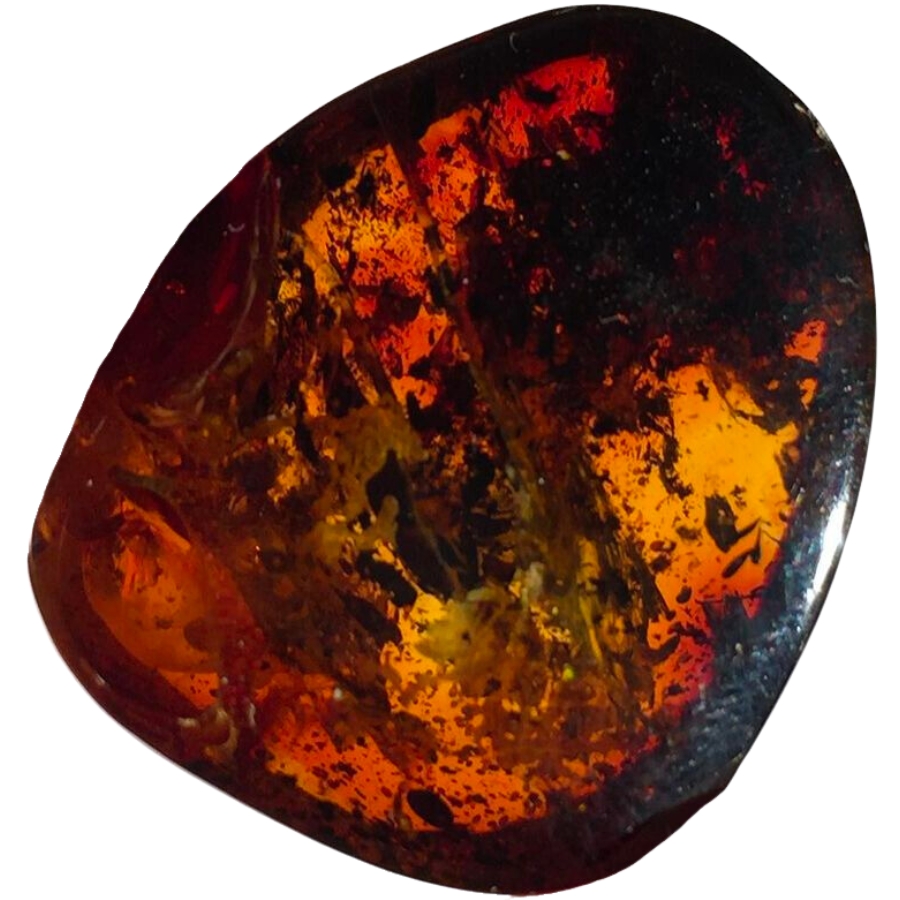
Mexican amber is typically found in a deep, reddish-brown color, which sets it apart from other types of amber. Its richness in color and the warmth it exudes make it a favorite among those who appreciate natural beauty.
One distinct feature of Mexican amber is its variety of insect inclusions, which are often incredibly well-preserved.
This feature adds significant scientific and aesthetic value to this amber type, making each piece a unique natural artifact.
Like Dominican amber, Mexican amber is generally younger than Baltic amber, typically dating back to around 22 to 26 million years ago.
This relative youth contributes to its unique characteristics, including the types of inclusions found within it, adding to its appeal and intrigue.
Where you can find Mexican amber
Mexican amber is primarily found in the state of Chiapas, Mexico. This region was once covered in lush, tropical forests where ancient trees produced the resin that transformed into amber.
While you can’t find Mexican amber in the USA, we have an amazing variety of stunning crystals that you might want to explore. For more guidance, refer to our article on crystal hunting.
Burmese Amber (Burmite)
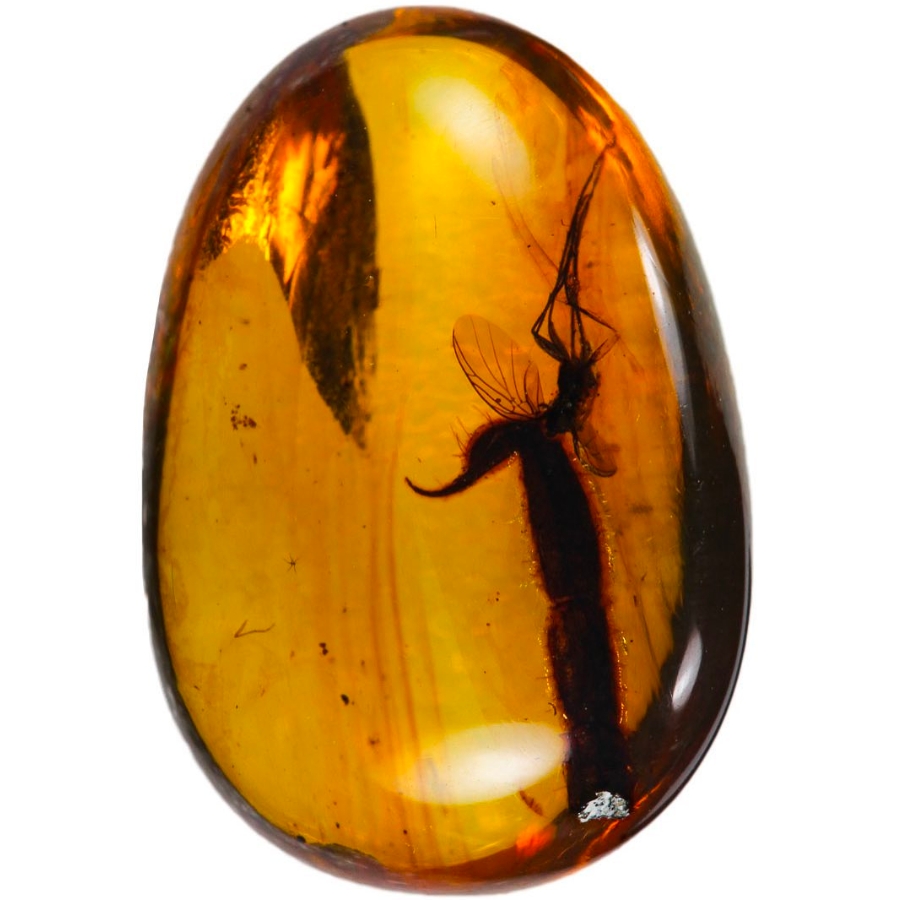
Also known as Burmite, Burmese amber is one of the oldest types of amber, dating back to the Cretaceous period, around 100 million years ago.
This great age makes it especially significant, as it provides a glimpse into a world far older than most other types of amber.
Burmese amber is renowned for its deep, rich colors, which range from a golden yellow to a dark red or brown.
The variety and rarity of its inclusions is a distinctive feature of this amber type. It often contains well-preserved remains of ancient flora and fauna, including insects, spiders, and even small vertebrates.
Burmese amber is highly valued not only for its beauty and rarity but also for the scientific insights it offers.
Where you can find Burmese amber (Burmite)
As its name suggests, Burmese amber is primarily found in Myanmar, particularly in the Hukawng Valley in the northern part of the country. The tropical climate and rich vegetation in these regions were ideal for resin production and preservation.
Sicilian Amber
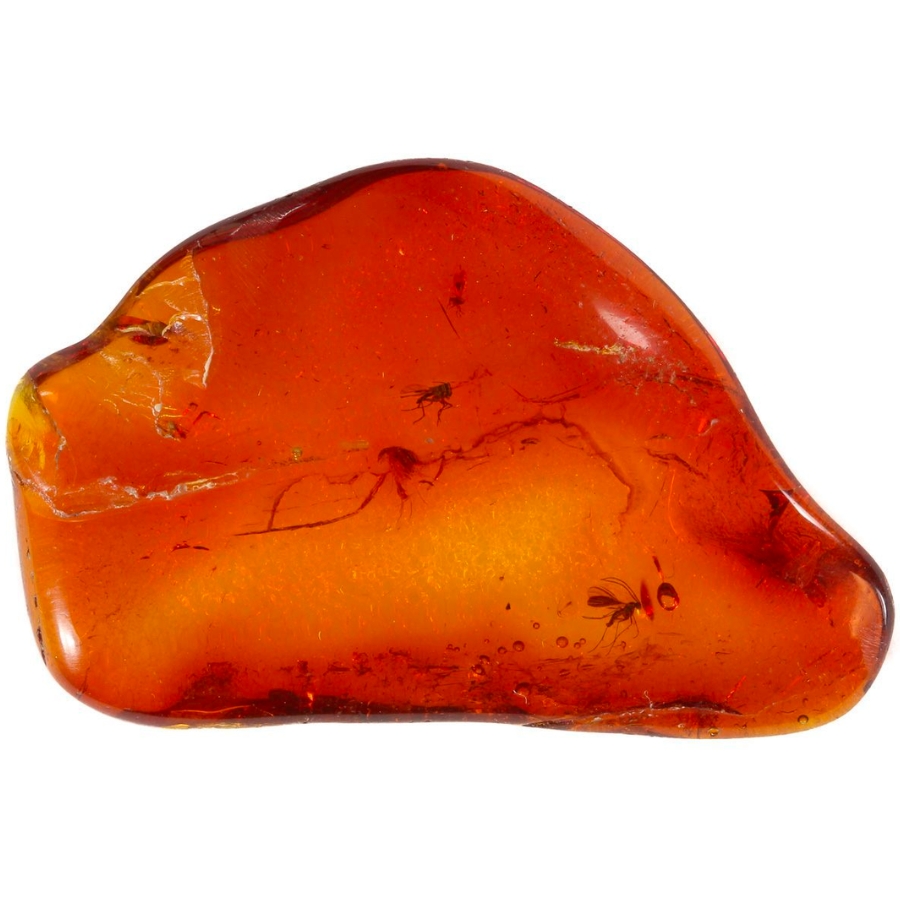
Sicilian amber has a darker color, which ranges from a deep red to almost black. This rich, mysterious hue gives it a special allure that catches the eye.
It’s also known for its rarity, which adds to its value. It’s not as commonly found as Baltic or Dominican amber, making it a prized possession for collectors and enthusiasts.
Another distinctive aspect of this amber type is its texture and feel. It tends to be harder and denser than other types of amber.
It’s also often found in association with fossilized remains of plants and insects, just like other ambers.
However, the types of inclusions in Sicilian amber can be different, reflecting the unique flora and fauna of the Mediterranean.
Where you can find Sicilian amber
Sicilian amber is mainly found in Sicily, an island in the Mediterranean Sea. Its rich history and diverse landscapes provided the perfect conditions for ancient trees to produce the resin that eventually became amber.
Sumatran Amber
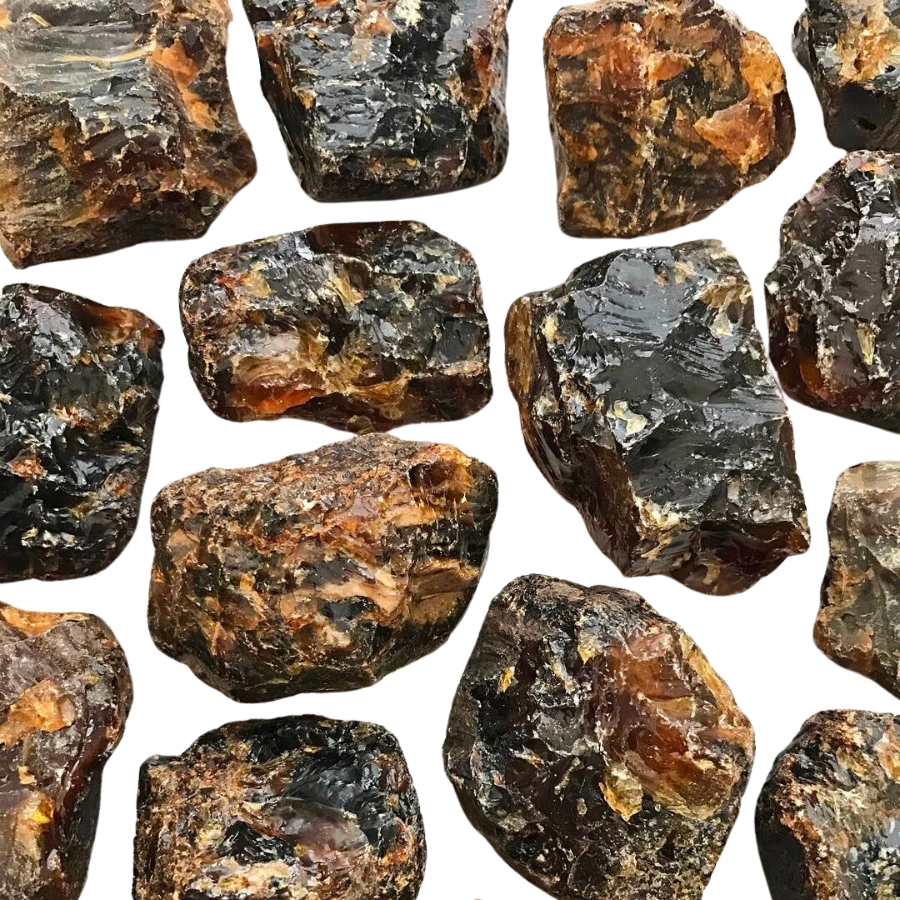
One of the most striking features of Sumatran amber is its range of colors.
It can vary from light yellows to deep reds, and even greens, making each piece distinct and eye-catching.
Sumatran amber is also valued for its inclusions, which are often well-preserved remnants of ancient life, such as insects or plant material.
This aspect makes this amber type highly sought after by collectors and researchers who are intrigued by its ability to tell stories from millions of years ago.
However, Sumatran amber is less commonly found in the market compared to other types of amber. This rarity adds to its value and makes it a prized find for those who are passionate about collecting unique and unusual gemstones.
Where you can find Sumatran amber
Sumatran amber is primarily found in Sumatra, an island in Indonesia. This region, known for its lush rainforests and diverse ecosystems, provided the perfect conditions for amber formation.
New Jersey Amber
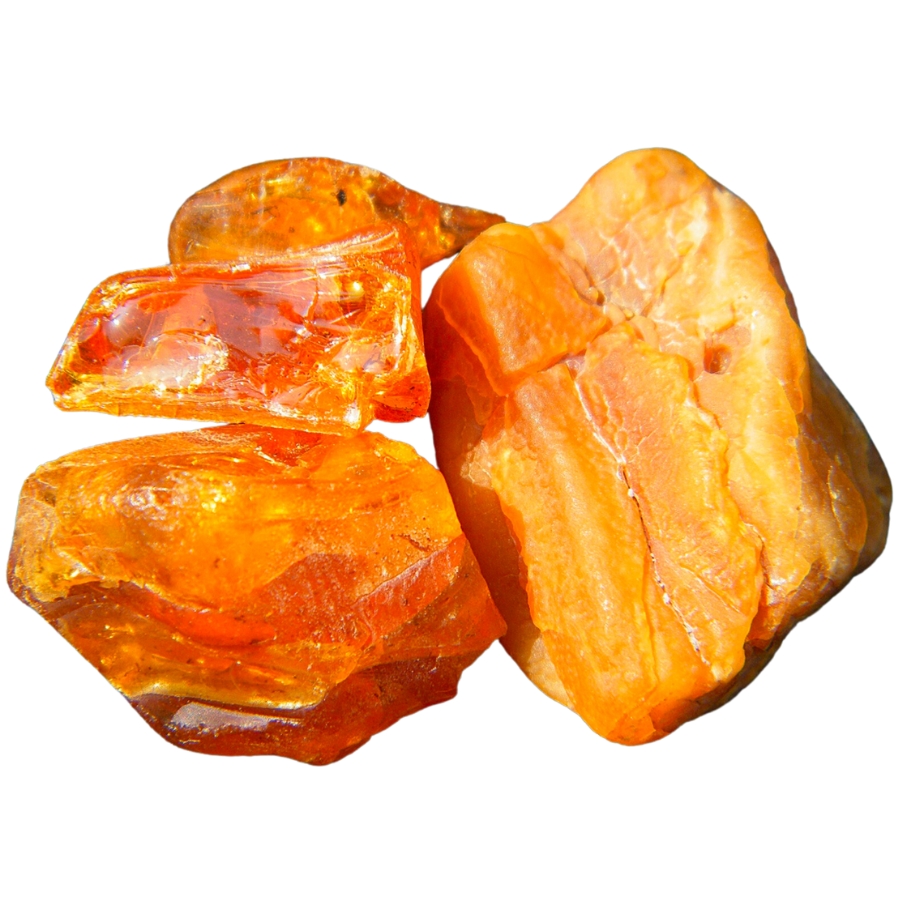
New Jersey amber is one of the few types of amber found in the USA. Its discovery provides an opportunity to study ancient ecosystems and understand the geological history of the region.
It has a rich history, as it comes from the Cretaceous period, making it around 90 to 94 million years old.
New Jersey amber can range in color from light yellow to dark brown, and it often has a cloudy or opaque look.
This different appearance sets it apart from other types of amber which is usually more transparent.
New Jersey amber is valued for its scientific importance, too. Because it’s from the Cretaceous period, it contains inclusions of insects and plants that give us clues about life on Earth during this period.
Where you can find New Jersey amber
New Jersey amber is found in, you guessed it, New Jersey! This type comes from areas where ancient forests once thrived. These places are usually along the coastal regions of the state.
Caribbean Amber
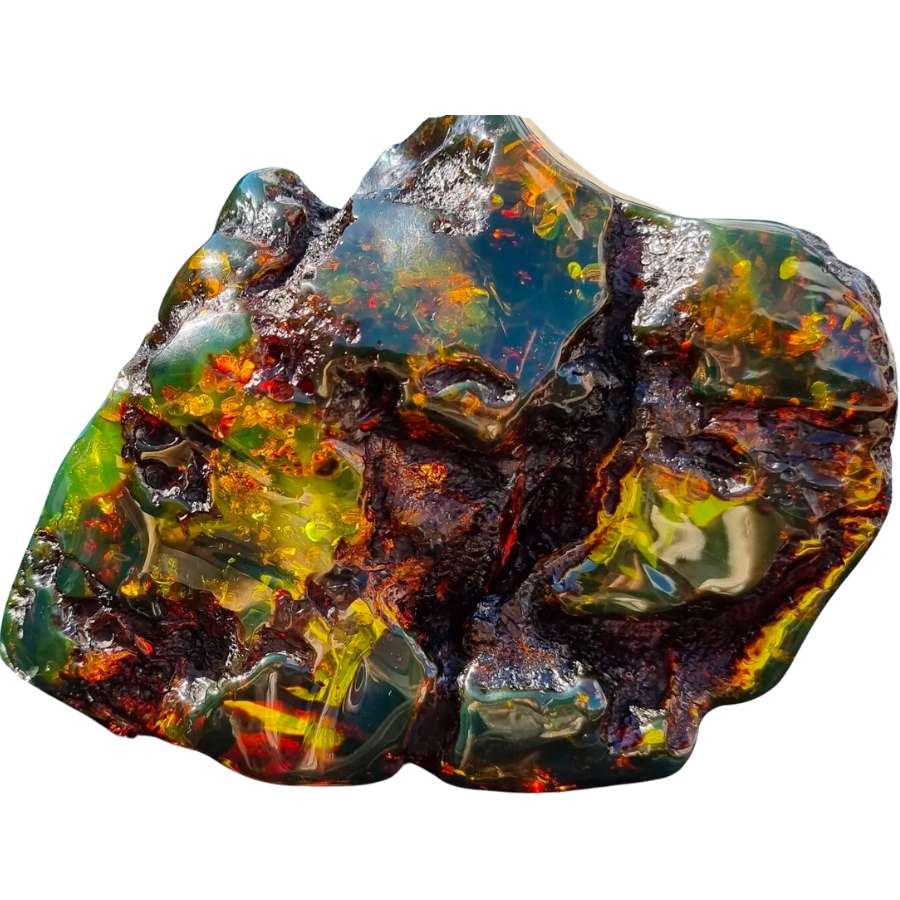
Caribbean amber captures the essence of the tropical regions where it forms.
The warm and humid conditions of the Caribbean are perfect for preserving resin and turning it into the gemstone we see today.
It can be found in hues from light yellow to deep orange and even reddish-brown. Some pieces are also transparent, while others are cloudy.
Caribbean amber can also display a rare blue or green color when viewed under natural sunlight. This is caused by the way light interacts with its internal structure.
Caribbean amber is valued not only for its beauty but also for the fascinating inclusions it often contains. These inclusions can be anything from small insects to plant material, trapped in it millions of years ago.
Where you can find Caribbean amber
Caribbean amber is commonly found in the tropical regions of the Caribbean, particularly in countries like the Dominican Republic and Colombia.
Bitterfeld Amber
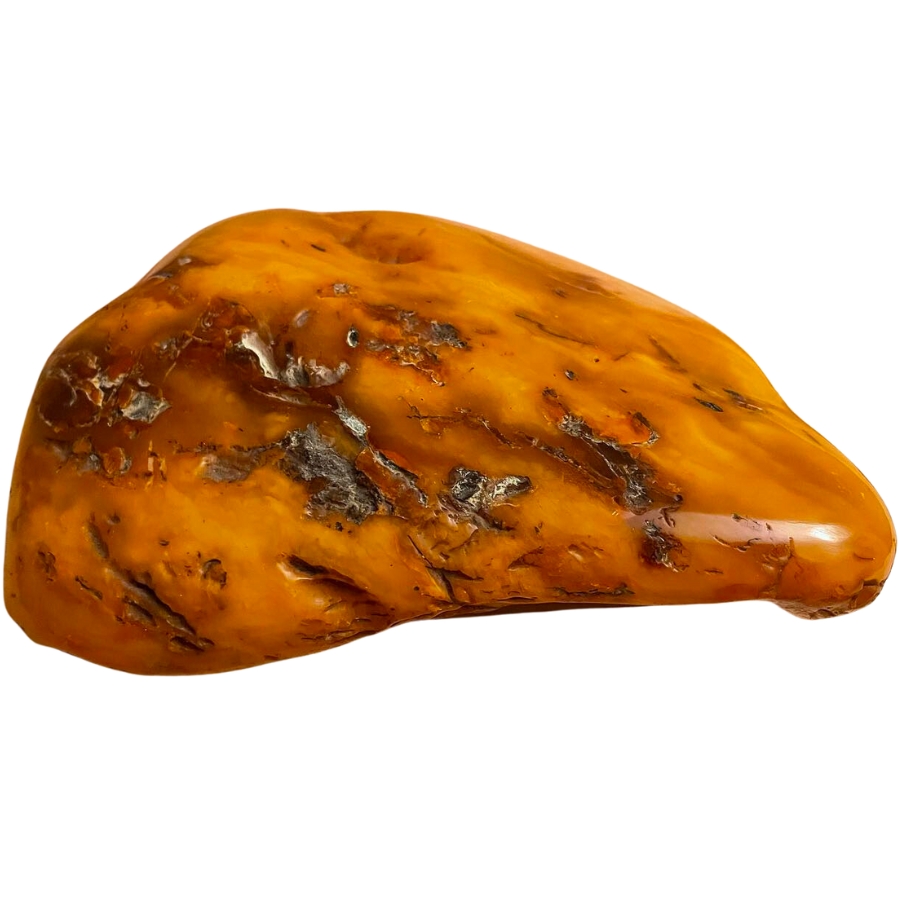
Bitterfeld amber varies in color from pale yellow to a rich golden hue, and it’s often quite clear, allowing us to see any inclusions inside.
These inclusions, like ancient insects or plant matter, add to this amber’s value.
Bitterfeld amber is valued for both its beauty and the historical insights it offers. The inclusions provide valuable information about the environment and life from its time.
It’s also used in jewelry and decorative items, where its warm colors and natural beauty are showcased.
Although it’s similar in many ways to Baltic amber, Bitterfeld amber is actually much younger. It dates back to around 20 to 22 million years ago, making it a younger sibling in the amber family.
Where you can find Bitterfeld amber
Bitterfeld amber is commonly found in the Bitterfeld region in Germany. This area was once rich in forests where trees produced the resin that later fossilized into amber.
Canadian Amber
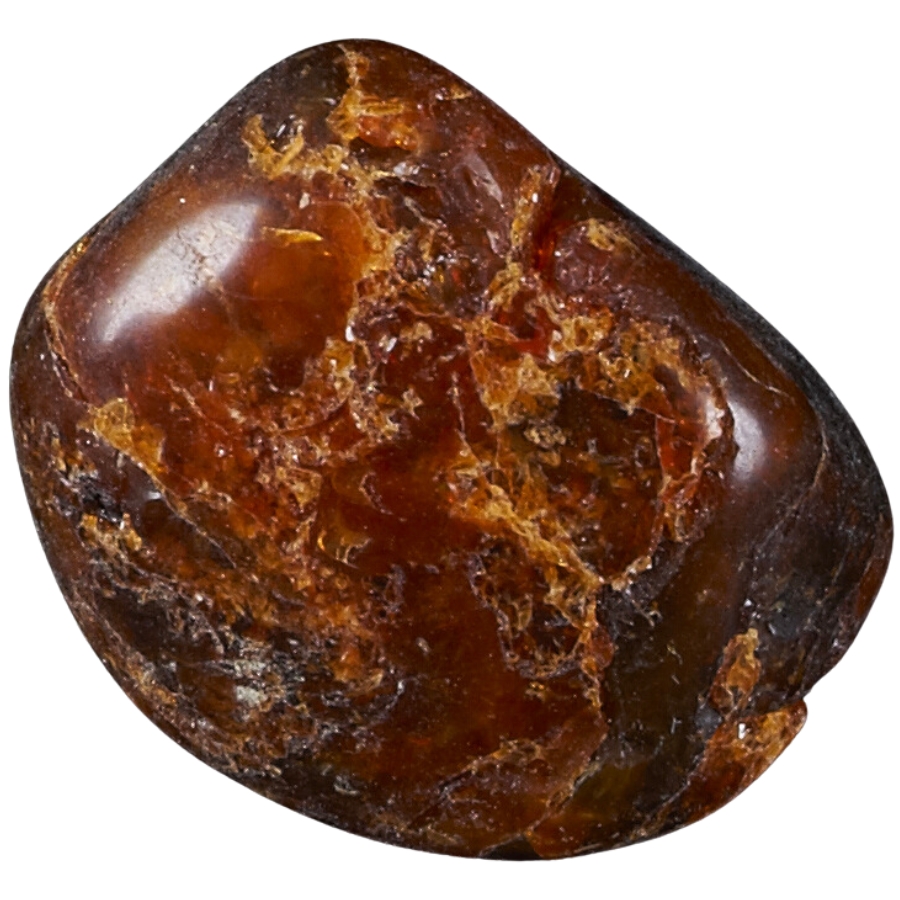
Canadian amber often has a rich, honey-like color, ranging from pale yellow to deep orange. Some pieces are transparent, while others have a more cloudy look, which adds to its appeal.
Interestingly, Canadian amber is one of the few amber types found in North America. Its presence there offers a unique opportunity to study the geological and biological history of the region.
Canadian amber is also valued for its fascinating inclusions that offer insights into the ecosystems of millions of years ago. Collectors and researchers treasure it for these tiny time capsules.
This makes Canadian amber an important piece of natural history, valued for both its aesthetic qualities and the scientific information it holds.
Where you can find Canadian amber
Canadian amber is typically found in the provinces of Alberta and British Columbia. In Alberta, its deposits are often discovered in areas with sedimentary rocks, like the banks of the Red Deer River.
British Columbia, on the other hand, has amber sites in its mountainous regions, where ancient forests once stood.
Cambay Amber
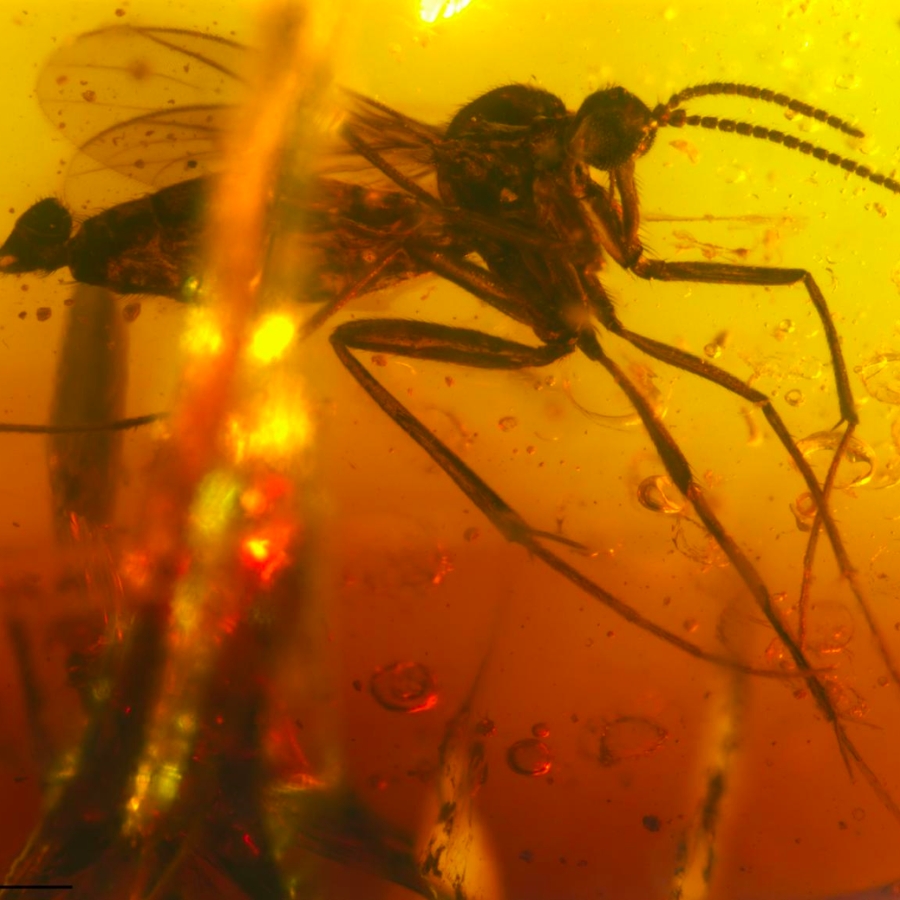
Cambay amber is known for its deep, rich colors, which range from golden yellow to dark brown, and sometimes even have a greenish tint. Its appearance can vary from transparent to translucent, giving it a mysterious and captivating look.
The beauty of this amber type lies in its depth of color and the way it seems to glow from within when light passes through it.
On top of its amazing colors, its variety of inclusions includes ancient plant material and sometimes even insects that lived millions of years ago.
Cambay amber is also valued for its rarity. It’s not as commonly found as other types, which adds to its allure.
It’s also one of the oldest types of amber available, and its great age adds another layer to its value.
Where you can find Cambay amber
Cambay amber is primarily found in the Cambay region of Gujarat, India. This area, known for its rich geological and cultural history, once had lush, ancient forests.
Ethiopian Amber
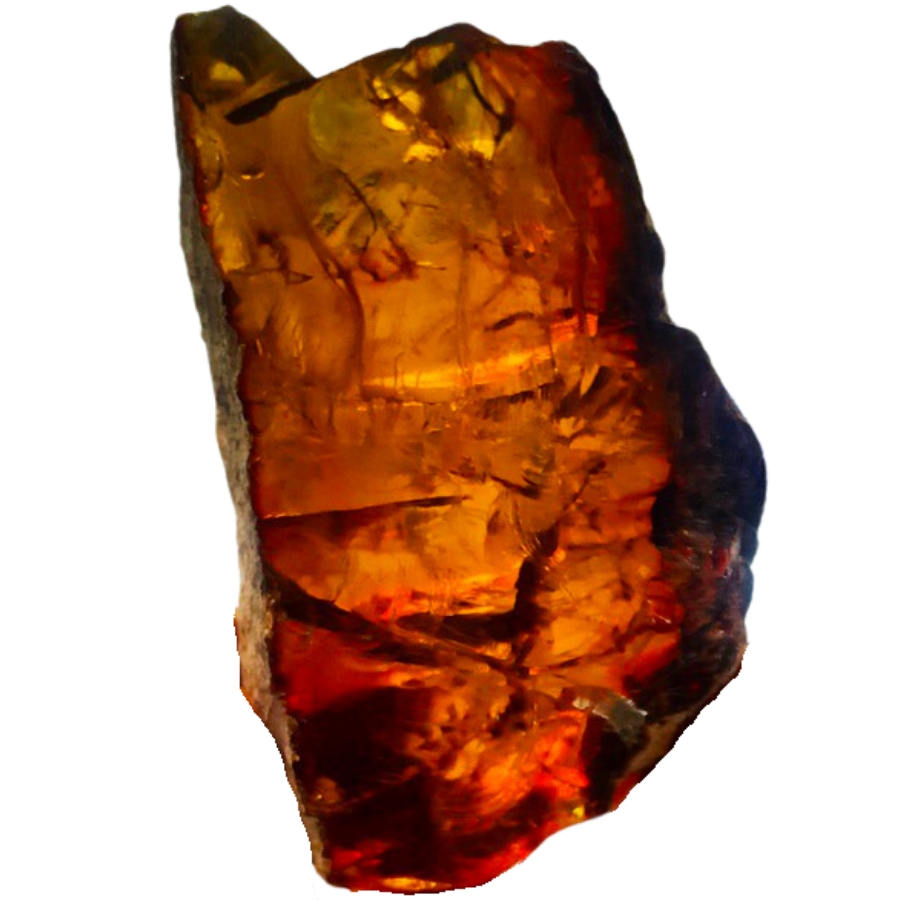
Ethiopian amber has rich, warm colors that range from golden yellow to deep orange and brown.
Some pieces are quite clear, allowing light to pass through and reveal any inclusions inside, while others are cloudier, giving them a mysterious appearance.
Ethiopian amber’s inclusions may include ancient insects or plant material from millions of years ago.
In fact, it’s considered one of the oldest types of amber available.
It’s valued for its rarity and the unique story it tells. While not commonly found as other ambers, its distinct coloration and the stories captured in its inclusions make it a sought-after gemstone.
Where you can find Ethiopian amber
Ethiopian amber is commonly found in the northern part of Ethiopia, particularly in regions like the Tigray and Amhara areas. These regions are characterized by their rugged landscapes, with mountainous terrains and scattered forests.
Fushun Amber
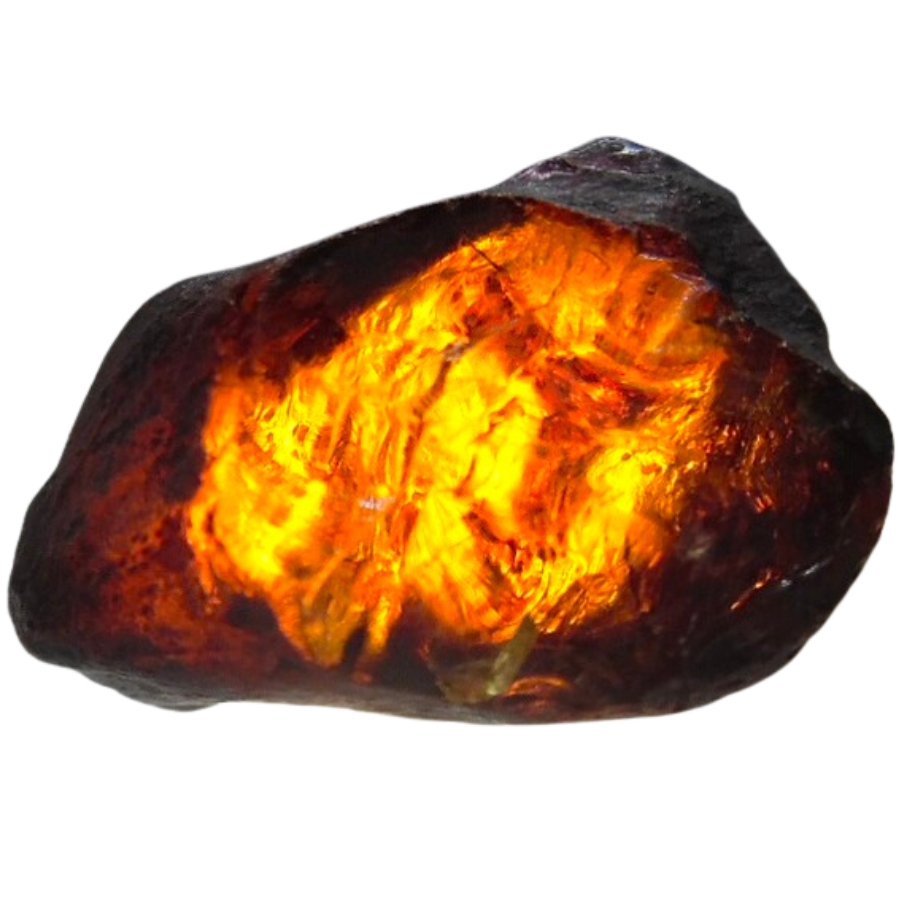
Fushun amber’s colors can range from a pale yellow to a deep reddish-brown. While some pieces are quite clear and allow light to shine through, others are more opaque.
Like other ambers, Fushun amber may contain inclusions, like ancient insects or plant material. They are like little windows into ancient ecosystems.
It’s valued for its beauty, the historical insights it offers, and its rarity. It’s not a common find, which makes it more sought after by collectors and enthusiasts.
More so, Fushun amber is one of the few types of amber that comes from China. This origin adds to its uniqueness and interesting traits.
Where you can find Fushun amber
Fushun amber is found in the Fushun area of Liaoning Province in northeastern China. This area is known for its coal mines and rich geological history.
In ancient times, it was covered in dense forests, where trees produced resin that later fossilized into amber. The climate and environment in Fushun were ideal for preserving this resin, allowing it to transform into beautiful amber.
Kuji Amber
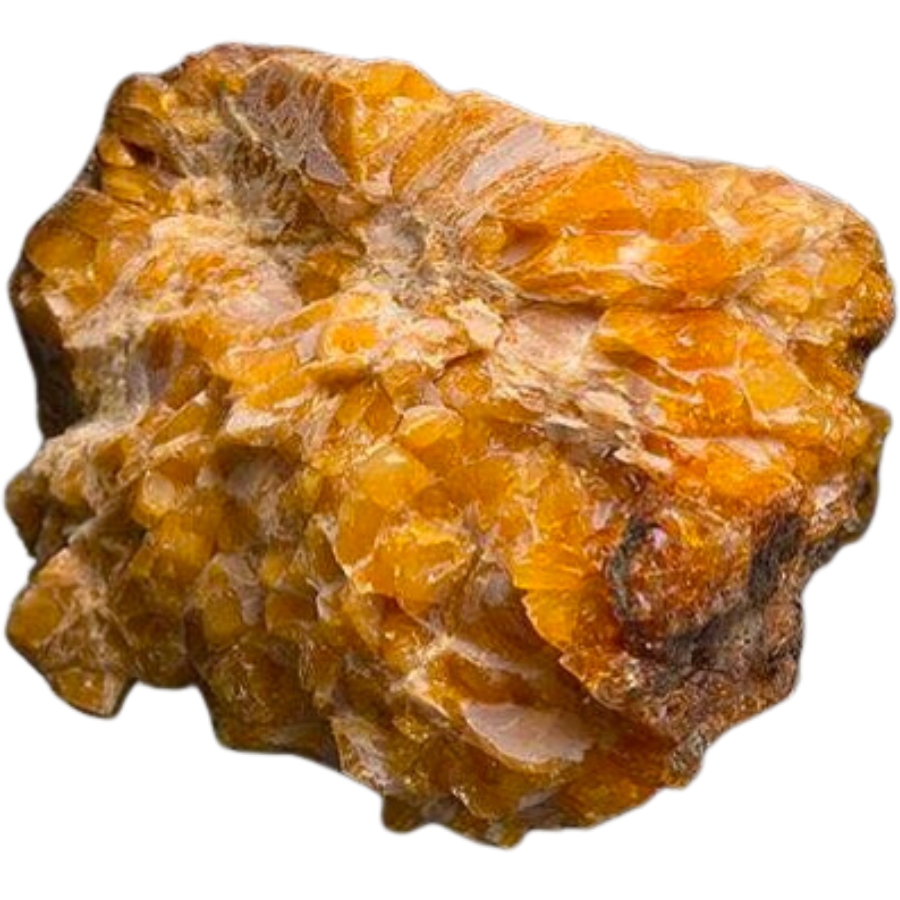
Kuji amber is known for its distinctive features. Its colors can vary from a light, almost lemon-yellow to a deep, rich orange or reddish-brown.
It can be incredibly clear, allowing you to see right through them, while others can be opaque, too.
The inclusions in Kuji amber are like little snapshots of ancient life. They make this gem highly valued by those interested in natural history and the story of our planet.
It’s one of the few types of amber that comes from Japan. This origin adds to its uniqueness.
Kuji amber is also valued for its rarity as it’s not commonly found. Its beauty, combined with the fascinating inclusions it contains, makes it special.
Where you can find Kuji amber
Kuji amber can be found in the Kuji area of Iwate Prefecture in northern Japan.
It has scenic landscapes, including lush forests and a beautiful coastline. The natural conditions in the Kuji region, with its climate and rich vegetation, were perfect for amber formation.
Jordanian Amber
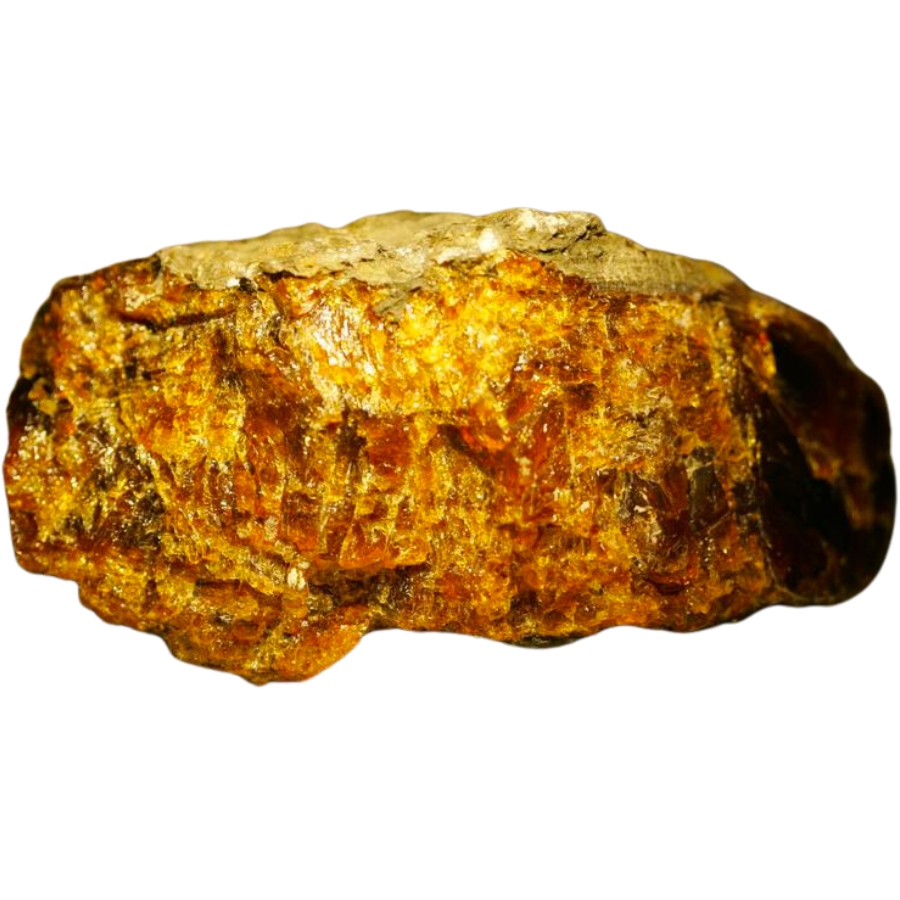
Jordanian amber typically displays a range of warm colors from golden yellow to deep reddish-brown.
You can find some pieces that are quite clear, allowing a detailed view of any inclusions, while there are those with opaque or cloudy looks.
Despite its amazing variety and quality of inclusions, Jordanian amber is considered one of the lesser-known types of amber. But this doesn’t make it any less valuable.
In fact, it’s valued for its beauty, the historical insights it offers, and its rarity. It’s not as commonly found as other amber types, which adds to its appeal.
Where you can find Jordanian amber
As its name suggests, Jordanian amber is commonly found in Jordan, particularly in the central and northern regions of the country.
These areas have rich geological history and diverse landscapes. It used to be covered with forests where resin-producing trees thrived.
Lebanese Amber (Barremian)
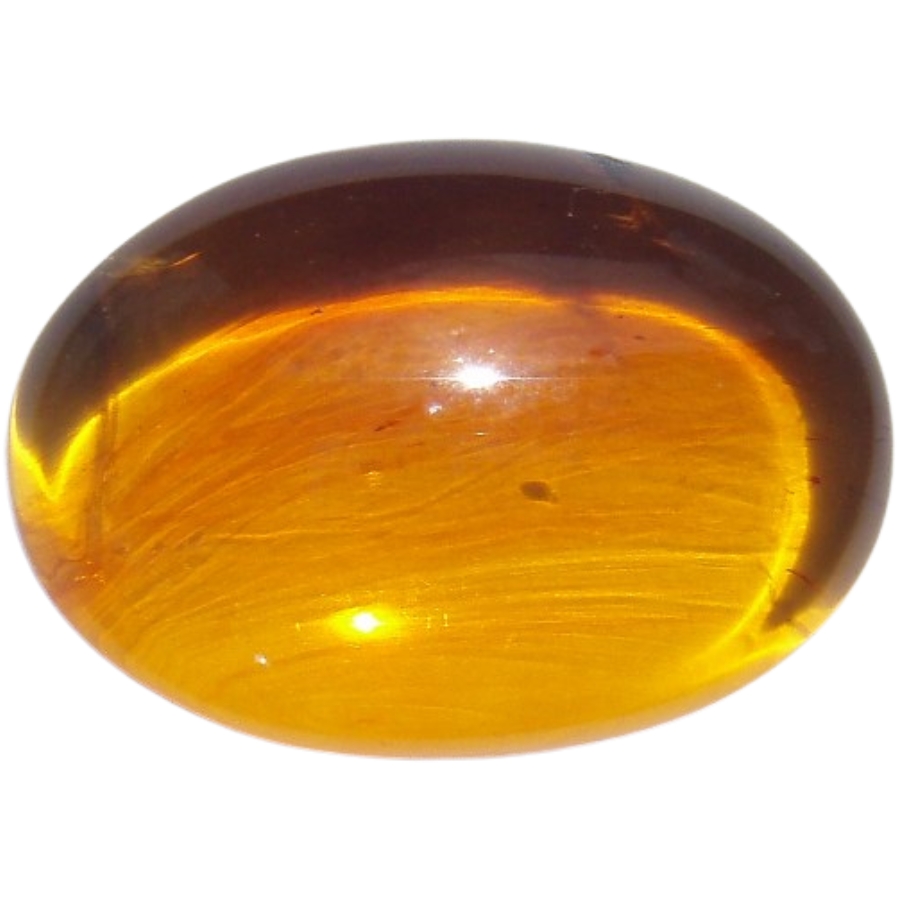
Lebanese amber, also known as Barremian amber, often has a deep, rich color, ranging from golden yellow to a darker orange or reddish hue.
Its appearance can vary from being quite clear to more opaque, each piece having its own unique charm.
What makes Lebanese amber distinct is the age and the types of inclusions it contains. These inclusions provide a fascinating glimpse and insights into life from over 100 million years ago during the Early Cretaceous period.
An interesting trivia about Lebanese amber is that it’s one of the oldest types of amber available. This great age adds to its allure.
It’s also valued for its rarity. It’s not a common find and this scarcity adds to its appeal, making it a prized gem.
Where you can find Lebanese amber (Barremian)
Lebanese amber is found in Lebanon, especially in regions like Jezzine and the mountains of central Lebanon. The natural conditions in these Lebanese regions, with their specific climate and vegetation, were ideal for preserving resin.
Oise Amber
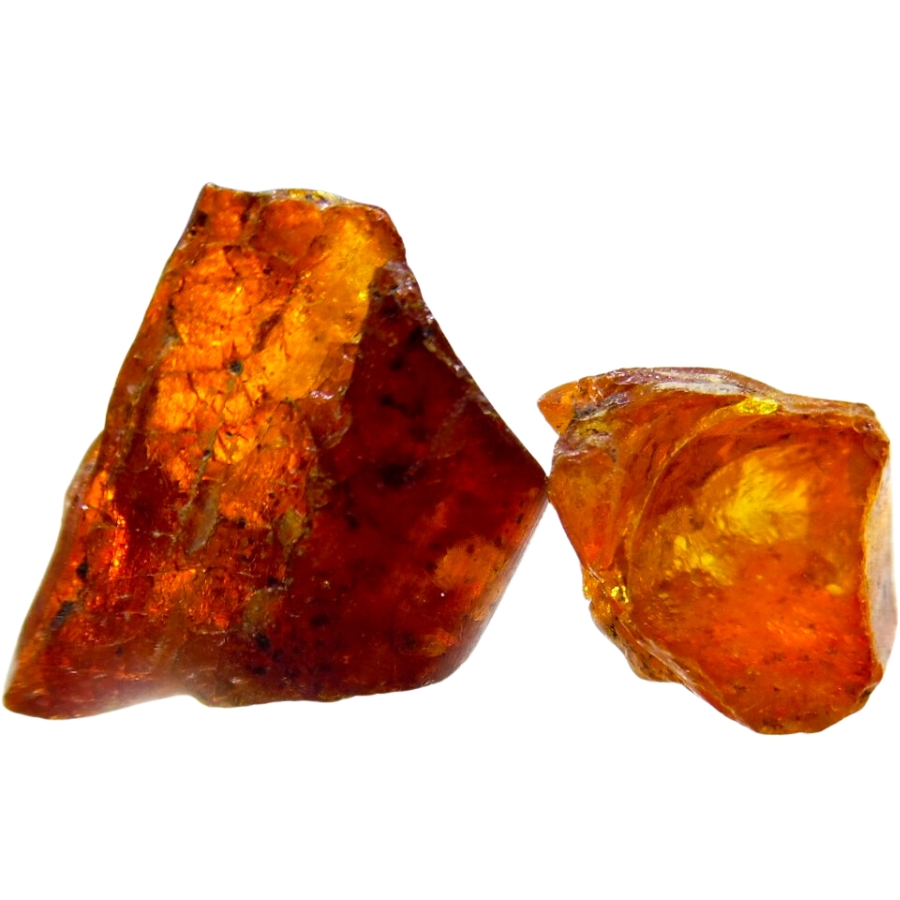
Oise amber typically has a lighter color, ranging from a pale yellow to a golden hue. Some of its specimens are remarkably clear, which is a treat when they contain inclusions. On the other hand, other pieces can be more cloudy.
What sets Oise amber apart is not only its lighter color but also the distinct nature of its inclusions. The beauty and the historical significance of its inclusions add to its overall appeal.
It’s also valued for its relative scarcity, which means it’s not as widely available as other amber types.
Oise amber dates back to the Eocene epoch, about 34 to 56 million years ago.
It provides a fascinating blend of beauty, rarity, and a deep connection to the ancient world.
Where you can find Oise amber
In general, Oise amber is found in the Oise region of northern France. It’s endowed with a rich geological history and picturesque landscapes. It was once covered in dense forests where resin-producing trees flourished.
Rovno Amber
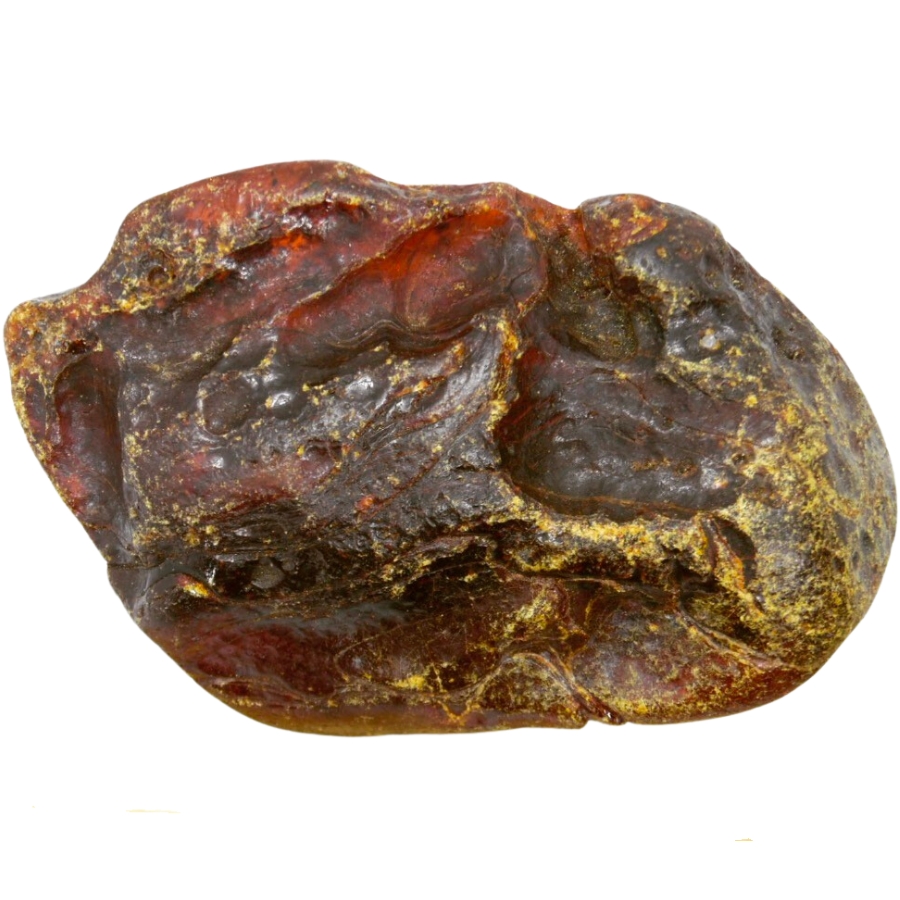
Rovno amber typically has a warm, rich color, ranging from a light honey hue to deeper shades of orange and brown.
Like the other types of amber, some specimens of Rovno amber may be quite transparent, while some are more opaque.
It’s valued for its historical significance. This amber originates from the Late Eocene to Early Miocene epochs, making it about 23 to 33 million years old. This age places Rovno amber among some of the older types of amber, adding to its appeal.
Another interesting thing about it is that it often contains a higher number of spider inclusions compared to other types of amber.
This unique characteristic makes Rovno amber particularly fascinating to those interested in arachnology and the history of these creatures.
Where you can find Rovno amber
Rovno amber is found in the Rovno region of Ukraine, which is known for its lush, ancient forests. The Rovno region’s landscape, with its combination of forests and wetlands, played a crucial role in the formation of this unique amber.
Sakhalin Amber
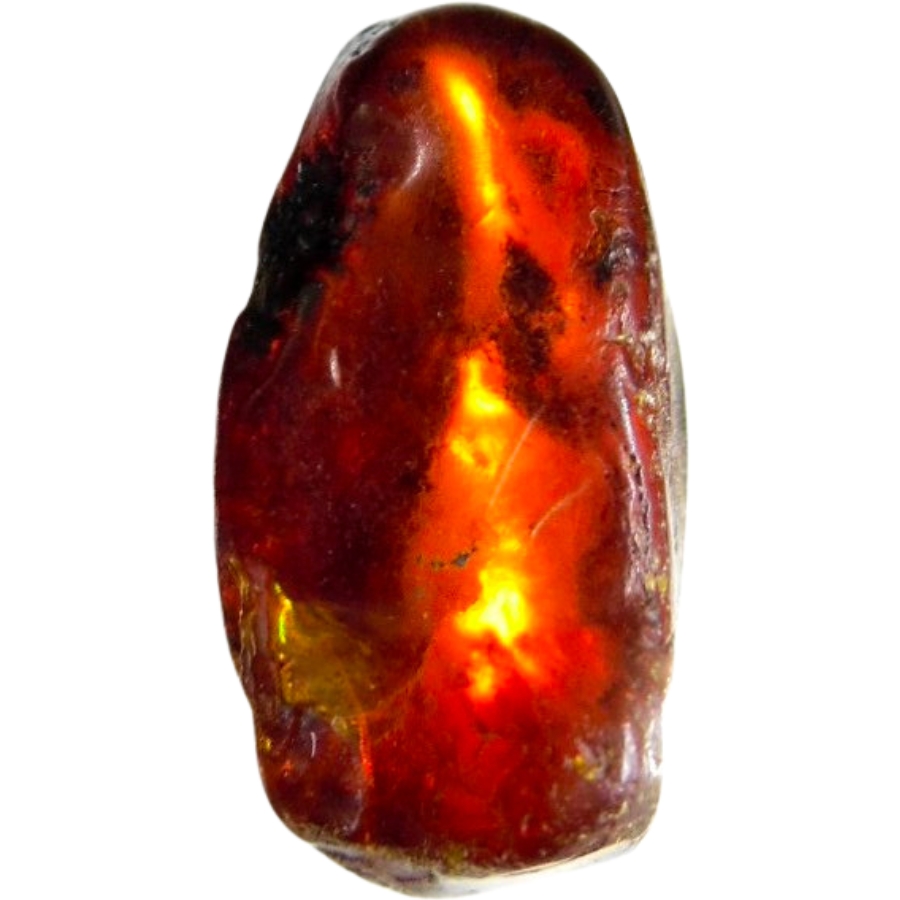
Sakhalin amber usually has a deep, rich color that ranges from golden yellow to reddish-brown. You might encounter pieces of this amber that are quite clear, while some may be opaque.
The inclusions typically found in Sakhalin amber are remnants of ancient plant material and sometimes insects.
It originates from the Miocene epoch, which means it’s about 15 to 20 million years old. This age places Sakhalin amber among some of the younger types of amber.
It’s also valued for its rarity, as it’s not commonly found like other types of amber. This makes it an even more interesting find.
The combination of its appearance, the intriguing inclusions it contains, and its age makes Sakhalin amber a valuable and interesting gemstone.
Where you can find Sakhalin amber
You can uncover Sakhalin amber on Sakhalin Island, located in the Russian Far East. This island is known for its rugged terrain, dense forests, and rich natural resources.
The specific climate and abundant vegetation on Sakhalin Island were ideal for preserving resin, allowing it to transform into amber.
Spanish Amber
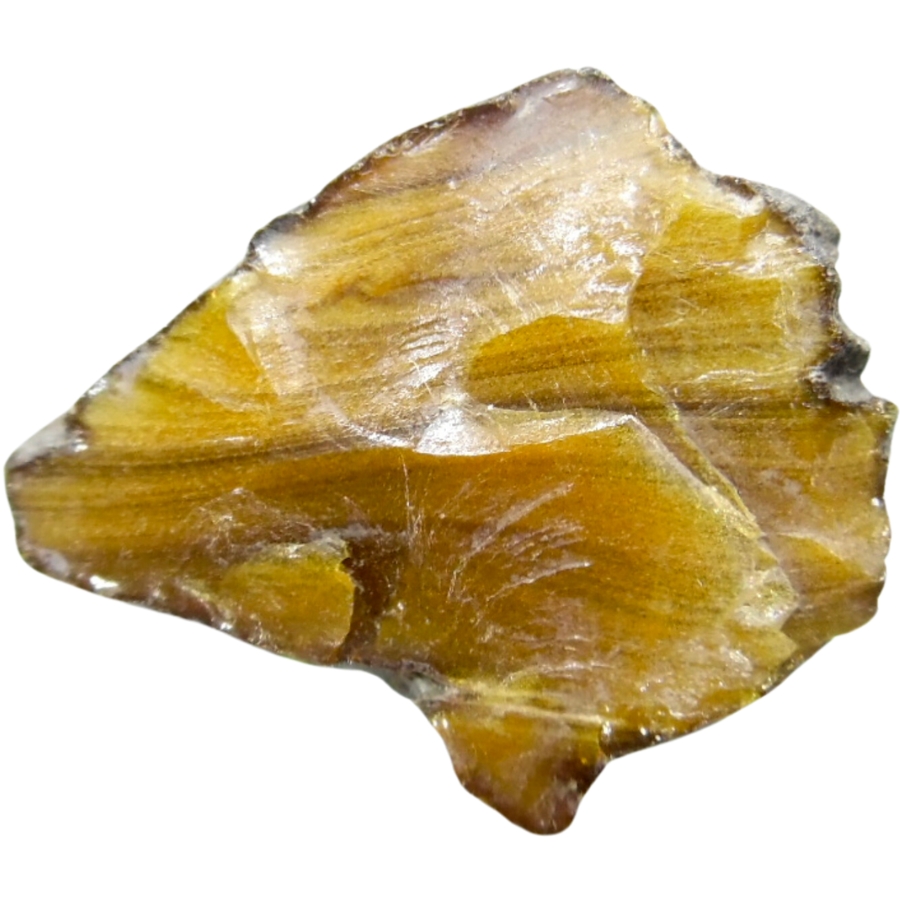
Spanish amber often showcases a variety of colors, from a light, almost lemon-yellow to a deeper orange or reddish hue. It can be clear, cloudy, or opaque.
The presence of inclusions adds to the value of Spanish amber, making it particularly appealing to those who appreciate its natural beauty and connection to history.
It dates back to the Early Cretaceous period, making it about 110 to 130 million years old. This means Spanish amber is among the older ambers out there.
This gemstone is also valued for its rarity and historical significance.
Where you can find Spanish amber
Interested in finding Spanish amber? It’s commonly found in the northern regions of Spain, particularly in the areas of Asturias and Cantabria.
These regions are known for their beautiful landscapes, featuring lush greenery, rolling hills, and rugged coastlines.
Sri Lankan Amber (Ceylonese)
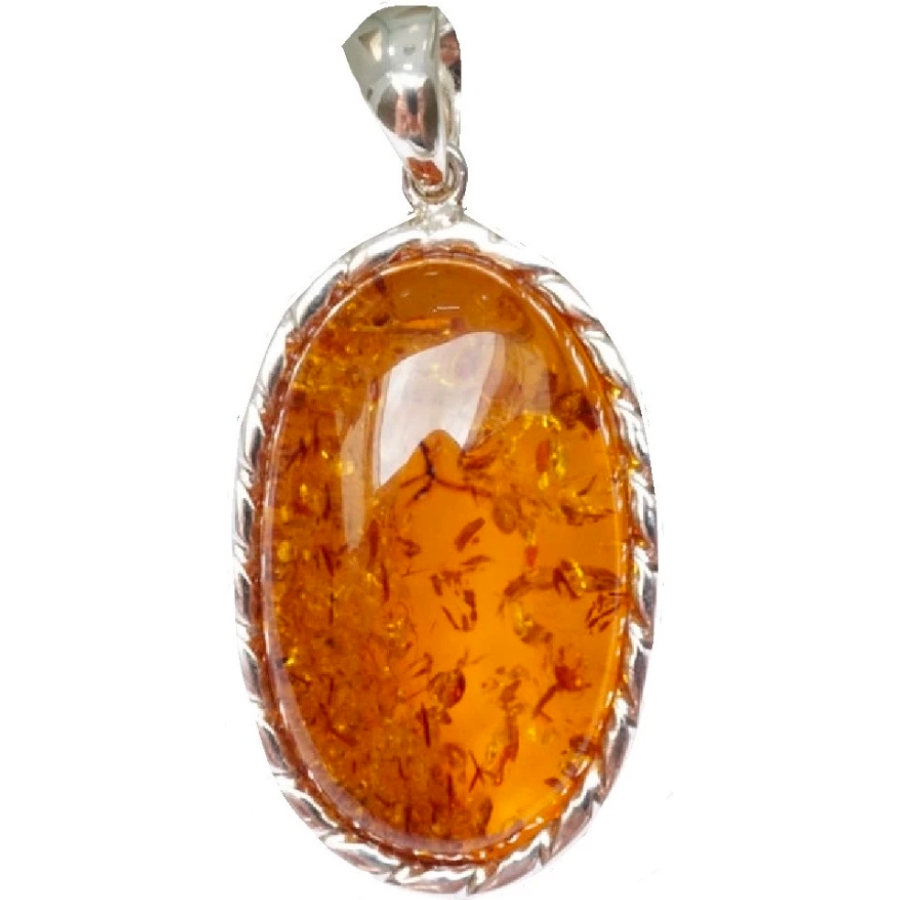
Sri Lankan amber, also known as Ceylonese amber, typically has a rich, deep color that ranges from golden yellow to a darker orange or even reddish-brown.
It can be clear, so you can see its inclusions clearly, but it can also be more opaque.
Sri Lankan amber is believed to be from the Eocene epoch, making it about 34 to 56 million years old. In comparison to other amber types, it is considered of the older age.
Aside from its precious inclusions, its rarity also makes Sri Lankan amber highly valued.
Where you can find Sri Lankan amber (Ceylonese)
Sri Lankan amber is typically found in Sri Lanka, particularly in Ratnapura and the Sabaragamuwa Province. These regions are renowned for their rich gemstone deposits and lush, tropical landscapes.
Taymyr Amber
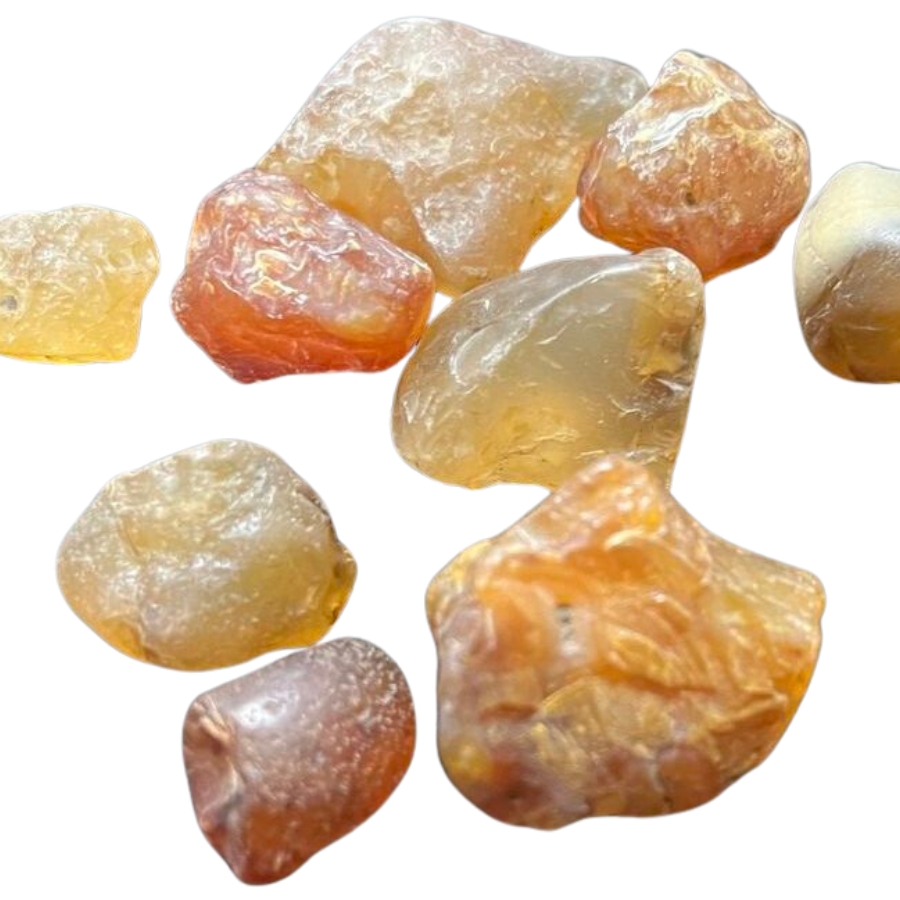
Taymyr amber has a deep, rich color, often ranging from a golden yellow to a darker reddish-brown. Like other amber types, it can be quite transparent, cloudy, or even opaque.
With its inclusions, Taymur amber becomes more valuable, especially for collectors and enthusiasts who appreciate its natural beauty and connection to history.
It’s generally considered a younger amber, as it’s believed to originate from the Miocene epoch. This makes it about 15 to 20 million years old.
Taymyr amber is not as common as other types of amber, such as Baltic or Dominican amber, which makes it even more valuable.
Where you can find Taymyr amber
Taymyr amber is commonly found in the Taymyr Peninsula, located in the northern part of Siberia, Russia. This remote and vast region is known for its harsh climate and rugged terrain.

